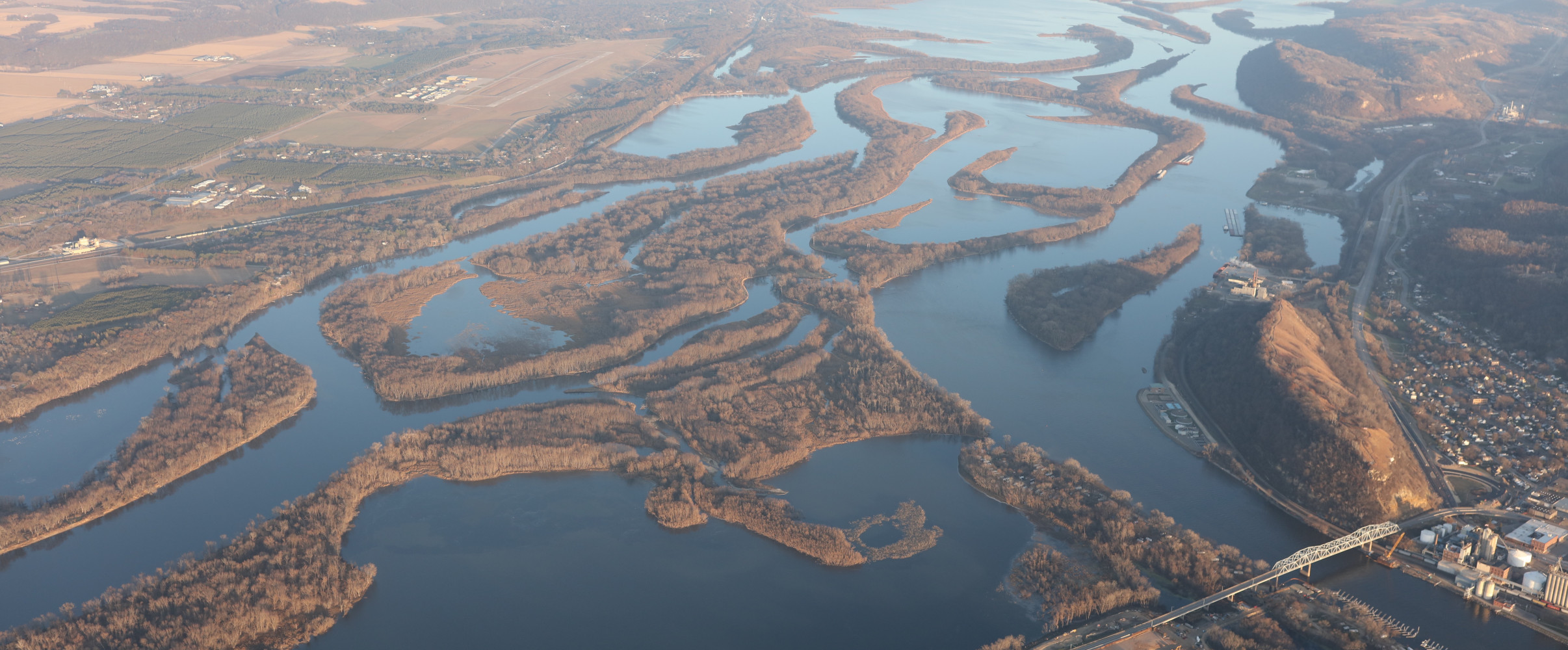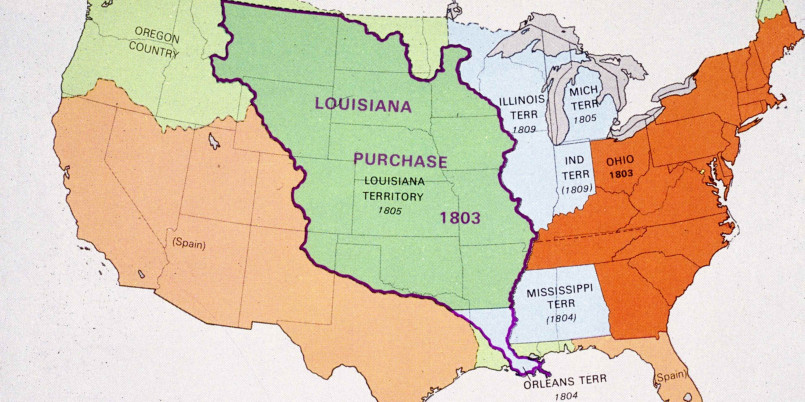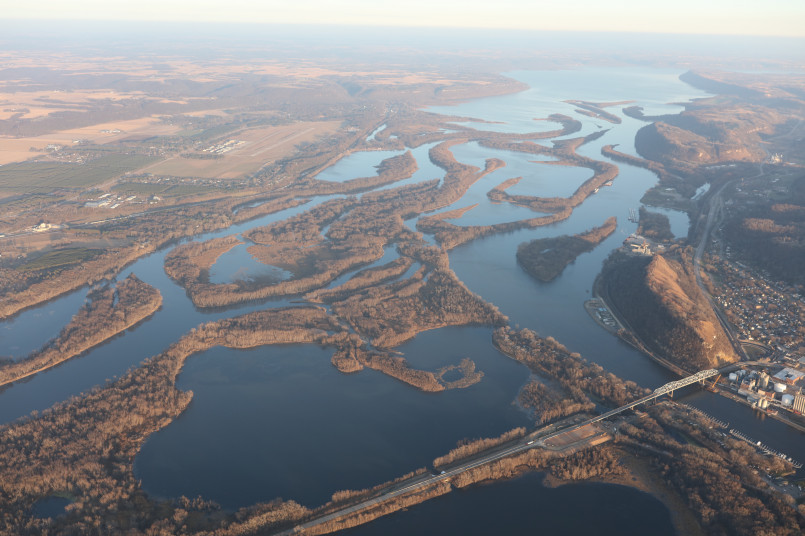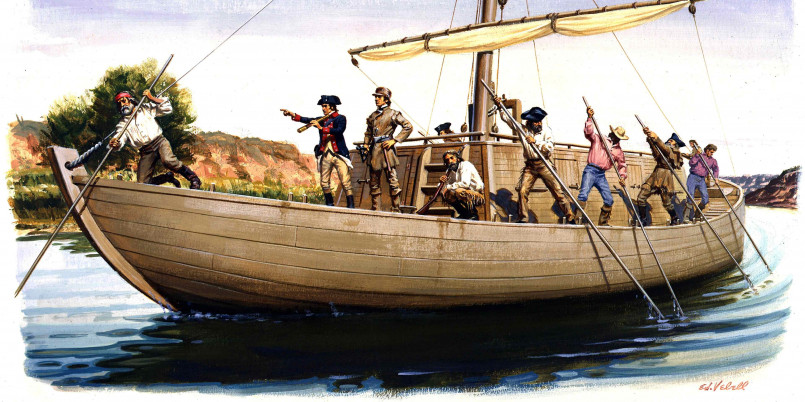The Mississippi River, spanning 2,320 miles through America's heartland, has been more than a geographical feature-it's been the lifeblood of American commerce for centuries. From enabling early agricultural exports to powering industrial growth and modern shipping, the river's impact on America's economic development has been immeasurable.
Flowing through the heart of America, the Mississippi River has shaped the nation's economic development more profoundly than perhaps any other geographical feature. Spanning 2,320 miles from Minnesota to the Gulf of Mexico, this mighty waterway has served as America's first superhighway, a natural resource provider, and an economic catalyst that transformed a developing nation into a global powerhouse.
The river's significance extends far beyond its impressive length-it drains 41% of the continental United States, creating a natural transportation corridor that connected previously isolated regions and enabled the movement of goods and people on an unprecedented scale. Today's American economy still bears the imprint of this magnificent waterway's influence.
Early Settlement and Economic Foundations
Long before European arrival, indigenous peoples used the Mississippi for trade, establishing economic networks that spanned thousands of miles. When French explorers led by Louis Joliet and Jacques Marquette navigated the river in 1673, they immediately recognized its economic potential.
By the late 18th century, the river had become essential to America's early economy. The 1803 Louisiana Purchase-arguably America's greatest real estate deal-was motivated largely by the need to secure navigation rights on the Mississippi. President Jefferson understood that whoever controlled the river controlled the economic future of the continent's interior.

Early trade relied on flatboats and keelboats that could carry agricultural products downstream to New Orleans. However, these vessels could rarely make the return journey against the current, limiting trade to a one-way proposition and resulting in many boats being dismantled and sold for lumber at their destination.
The Steamboat Revolution
Everything changed with the advent of steamboat technology. In 1811, the New Orleans became the first steamboat to travel the Mississippi, demonstrating that vessels could now navigate upstream against the powerful current. This technological breakthrough transformed the river into a two-way commercial artery.
By the 1830s, more than 1,200 steamboats regularly plied the Mississippi and its tributaries. These vessels dramatically reduced transportation costs, with freight rates falling by as much as 90% between 1815 and 1860. This made it economically viable to ship goods in both directions, igniting a commercial revolution.
Cities like St. Louis, Memphis, and New Orleans boomed as steamboat hubs. New Orleans in particular flourished as America's second-largest port, handling an enormous volume of exports that connected America's interior to global markets. By 1860, the value of goods arriving at New Orleans exceeded $200 million annually (equivalent to billions today).
Agricultural Transformation of America's Heartland
The Mississippi River system made vast swaths of America's interior economically viable for large-scale agriculture. Farmers in the Ohio and Mississippi valleys could now efficiently transport their products to market, leading to rapid agricultural expansion.
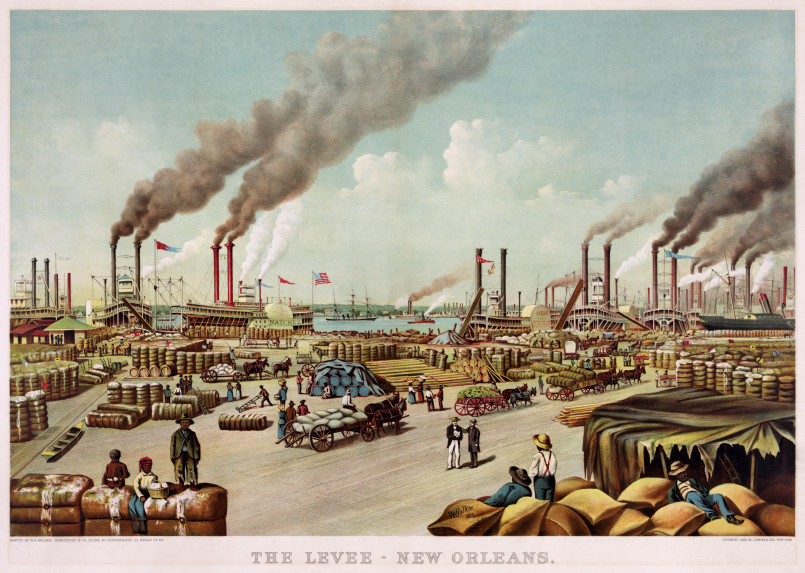
The fertile soil of the Mississippi Delta became the foundation for an agricultural empire. Cotton production exploded along the river's southern reaches, with plantations shipping their harvests to New Orleans for export to textile mills in England and New England. By the 1850s, cotton constituted more than 50% of American exports by value, much of it flowing down the Mississippi.
Further north, grain production transformed the economy of the Midwest. The river allowed farmers to ship corn and wheat to distant markets, fueling population growth and prosperity throughout the region. This agricultural bounty would eventually help establish America as the world's breadbasket.
The Civil War and the River's Economic Pivotal Role
During the Civil War, control of the Mississippi became a critical strategic objective for both Union and Confederate forces. President Lincoln famously noted, "The Mississippi is the backbone of the Rebellion; it is the key to the whole situation." The Union's campaign to secure the river culminated in the Siege of Vicksburg in 1863, effectively splitting the Confederacy and strangling its economy.
The war demonstrated the river's central importance to national economic unity. After Union forces reopened the Mississippi to northern shipping, agricultural products once again flowed to New Orleans, reestablishing vital commercial connections that would strengthen in the post-war era.
Industrial Growth and the Rise of River Cities
As America industrialized in the late 19th century, the Mississippi River powered economic transformation. Cities along its banks became manufacturing powerhouses, using the river for both transportation and as a source of water for industrial processes.
St. Louis grew into a major manufacturing center, processing agricultural products from the surrounding region. Minneapolis harnessed the river's power at St. Anthony Falls to become the world's flour milling capital. Pittsburgh, at the headwaters of the Ohio River (a major Mississippi tributary), became a steel manufacturing giant.
The river system facilitated the movement of raw materials to factories and finished goods to markets. Coal from Appalachia, iron ore from Minnesota, and timber from Wisconsin all traveled via the Mississippi system, fueling industrial growth throughout America's heartland.
Modern Shipping Infrastructure and Economic Impact
The 20th century brought dramatic infrastructure improvements that enhanced the Mississippi's economic importance. The U.S. Army Corps of Engineers constructed a system of 29 locks and dams on the upper Mississippi to maintain a 9-foot navigation channel, allowing modern barges to operate year-round as far north as Minneapolis.

Today, the Mississippi River moves more than 500 million tons of cargo annually, including 60% of America's grain exports, 22% of its oil and gas shipments, and 20% of its coal. A single 15-barge tow can carry the equivalent of 1,050 trucks or 216 rail cars, making river transport exceptionally efficient and cost-effective.
The river directly supports more than 1.3 million jobs and generates $405 billion in annual economic activity. Industries ranging from agriculture and manufacturing to tourism and energy production depend on the Mississippi for their operations.
Environmental Challenges and Economic Future
Despite its economic importance, the Mississippi faces significant environmental challenges that threaten its commercial viability. Agricultural runoff has created a massive "dead zone" in the Gulf of Mexico, while aging infrastructure threatens reliable navigation.
Climate change presents additional challenges, with more frequent flooding and drought cycles disrupting river commerce. The devastating drought of 2012 and the major floods of 2019 both caused billions in economic damage and temporarily halted shipping on parts of the river.
Addressing these challenges will require substantial investment in infrastructure and environmental protection. The America's Water Infrastructure Act and similar legislation represent efforts to modernize the river's transportation system while improving environmental sustainability.
Despite these challenges, the Mississippi River remains indispensable to America's economy. As global demand for American agricultural products grows and energy production evolves, this historic waterway will continue its role as an economic cornerstone for generations to come.
Frequently Asked Questions About 7 Ways the Mississippi River Transformed America's Economic Landscape
Why was controlling the Mississippi River so important during the Civil War?
The Mississippi River was called the "backbone of the Rebellion" by President Lincoln because it provided a crucial transportation route for Southern agricultural products and supplies. By controlling the river, particularly after the Siege of Vicksburg in 1863, the Union effectively split the Confederacy in two, preventing the transport of troops and supplies between Confederate states east and west of the river. This control strangled the Confederate economy and was a decisive factor in the Union victory.
How does shipping on the Mississippi River compare to trucks and railroads?
Mississippi River shipping is remarkably efficient compared to other transportation methods. A single standard 15-barge tow can carry the equivalent cargo of approximately 1,050 semi-trucks or 216 railroad cars. This makes river transport not only more fuel-efficient (one gallon of fuel can move one ton of cargo 514 miles by barge, compared to 202 miles by rail or just 59 miles by truck) but also significantly more cost-effective for bulk commodities like grain, coal, petroleum products, and construction materials.
What percentage of U.S. agricultural exports travel on the Mississippi River?
Approximately 60% of all U.S. grain exports travel down the Mississippi River system to ports near the Gulf of Mexico for international shipment. This includes corn, soybeans, wheat, and other agricultural commodities from America's heartland. The river provides the most economical route for these products to reach global markets, directly supporting America's position as a leading agricultural exporter and contributing billions to the U.S. economy annually.
How has modern infrastructure improved Mississippi River commerce?
The Mississippi River's navigability has been dramatically improved through infrastructure development, particularly the system of 29 locks and dams maintained by the U.S. Army Corps of Engineers on the Upper Mississippi. This system maintains a minimum 9-foot navigation channel year-round, allowing modern barges to operate consistently. Additional improvements include channel dredging, wing dikes to concentrate water flow, levees for flood control, and sophisticated navigation aids. These investments have transformed a sometimes unpredictable waterway into a reliable transportation corridor.
What environmental challenges threaten the Mississippi River's economic function?
The Mississippi faces several environmental challenges that impact its economic viability. Agricultural runoff containing fertilizers has created a Gulf of Mexico "dead zone" that threatens fisheries. Sedimentation requires constant dredging to maintain navigation channels. Climate change has increased flooding and drought cycles, both disrupting shipping. Aging infrastructure, with many locks and dams exceeding their designed lifespan, threatens reliability. Invasive species like Asian carp jeopardize native ecosystems. Addressing these challenges requires balancing economic needs with environmental protection.
Which cities experienced the most growth due to their location on the Mississippi?
Several major American cities owe their growth directly to their strategic locations on the Mississippi River. New Orleans became America's second-largest port in the 19th century as the gateway between the river and international markets. St. Louis flourished as a midpoint trading hub and manufacturing center. Minneapolis-St. Paul developed around St. Anthony Falls, using water power for flour milling. Memphis grew as a major cotton shipping point. Other significant river cities include Pittsburgh (at the headwaters of the Ohio River tributary), Cincinnati, Louisville, and Baton Rouge.
